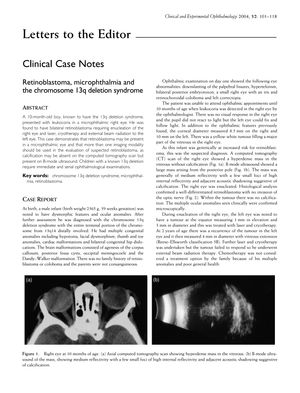Clinical Case Notes: Lipoid Proteinosis - A Rare Disorder with Pathognomonic Lid Lesions
February 2004
in “
Clinical and Experimental Ophthalmology
”

TLDR A baby boy with 13q deletion syndrome had eye cancer, a woman's vision improved after stopping a breast cancer drug, a man developed cataracts from using Propecia, and a rare skin disorder called Lipoid Proteinosis was discussed. Also, a tool called OCT is useful for diagnosing macular diseases.
In 2004, several case studies and reports were presented. One involved a 10-month-old boy with 13q deletion syndrome who was diagnosed with bilateral retinoblastoma, emphasizing the importance of using multiple imaging modalities for evaluation. Another case involved a 68-year-old woman with metastatic breast cancer whose vision improved after stopping tamoxifen, suggesting tamoxifen toxic optic neuropathy as a potential side effect. A 43-year-old man developed bilateral cataracts after using Propecia (finasteride) for 3 years, marking the first reported case of Propecia-associated cataract. A study on a patient who developed cataracts after using Propecia suggested that finasteride can be associated with the development of cataracts. The document also discussed Lipoid Proteinosis, a rare disorder characterized by non-inflammatory, persistent papules on the skin and mucous membranes. Two clinical cases of Adult-onset Foveomacular Vitelliform Dystrophy (AOFVD) were presented, concluding that Optical Coherence Tomography (OCT) is a useful tool in providing diagnostic information about various macular diseases, including AOFVD.
